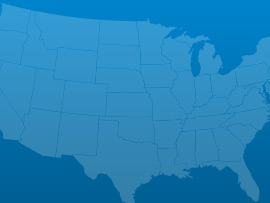Utah has a strong history of investment in roads, meeting ever increasing demands through innovative construction approaches and subscribing to a proven philosophy that “good roads cost less.” Many of Utah’s roads are over 50 years old, although most state-maintained pavement surfaces have had some kind of surface treatment in the past 10 years. However, as maintenance and construction costs have risen and roads have aged, data shows that less traveled roads and local roads are receiving less maintenance than needed. Since 1990, new lane miles in Utah have increased by only 6%, yet during that same time period, Utah’s population has increased by 60% and travel miles increased by roughly 80%. Utah’s double challenge is to maintain the vast inventory of existing roads while also meeting pressing demands of growth. While Utah has done well, future demands will require even more attention to maintaining a growing road network and funding the vision outlined in Utah’s Unified Transportation Plan.
 Bridges
Bridges Canals
Canals Dams
Dams Drinking Water
Drinking Water Hazardous Waste
Hazardous Waste Levees
Levees Roads
Roads Solid Waste
Solid Waste Transit
TransitA: Exceptional, B: Good, C: Mediocre, D: Poor, F: Failing, ?: Incomplete
Each category was evaluated on the basis of capacity, condition, funding, future need, operation and maintenance, public safety, resilience, and innovation
Aviation
36 public-use airports
Bridges
117 of the 2,974 bridges are structurally deficient
Bridges
$10.70 million in bridge funds came from the Federal Highway Bridge Fund in 2011
Dams
100% of the state regulated dams have an Emergency Action Plan
Dams
201 high hazard dams
Drinking Water
$3.7 billion in drinking water infrastructure needs over the next 20 years
Energy
1.476 gigawatt-hours of renewable energy every year, ranking it 43rd
Hazardous Waste
15 sites on the National Priorities List
Levees
72 miles of levees
Public Parks
$356.0 million of unmet needs for its parks system
Rail
8 freight railroads covering 1,356 miles across the state, ranking 38th nationally by mileage
Roads
4,692 of the state’s 45,891 public roads are major roads, and 4% are in poor condition
Roads
$527.0 million a year in costs to motorists from driving on roads in need of repair, which is $295 /yr per motorist
Schools
$3.1 billion in estimated school infrastructure funding needs
Transit
40.3 million annual unlinked passenger trips via transit systems including bus, transit, and commuter trains
Wastewater
$2.9 billion in wastewater infrastructure needs over the next 20 years

March 03, 2017
As the President’s repeated in his address to Congress his pledge to dramatically increase infrastructure spending to the tune of $1 trillion, various Congressional Committees

March 01, 2017
On Tuesday night, President Trump addressed a joint-session of Congress for the first time in his presidency. Infrastructure was among the many issues he discussed.

February 28, 2017
U.S. motorists set a new record for vehicle miles travelled (VMT) in 2016, driving over 3.2 trillion miles, an increase of 70 billion miles from

February 17, 2017
Romantic dates, the Grammy awards and celebrating black history are not the only milestones of this week; the Oroville dam crisis in California and the